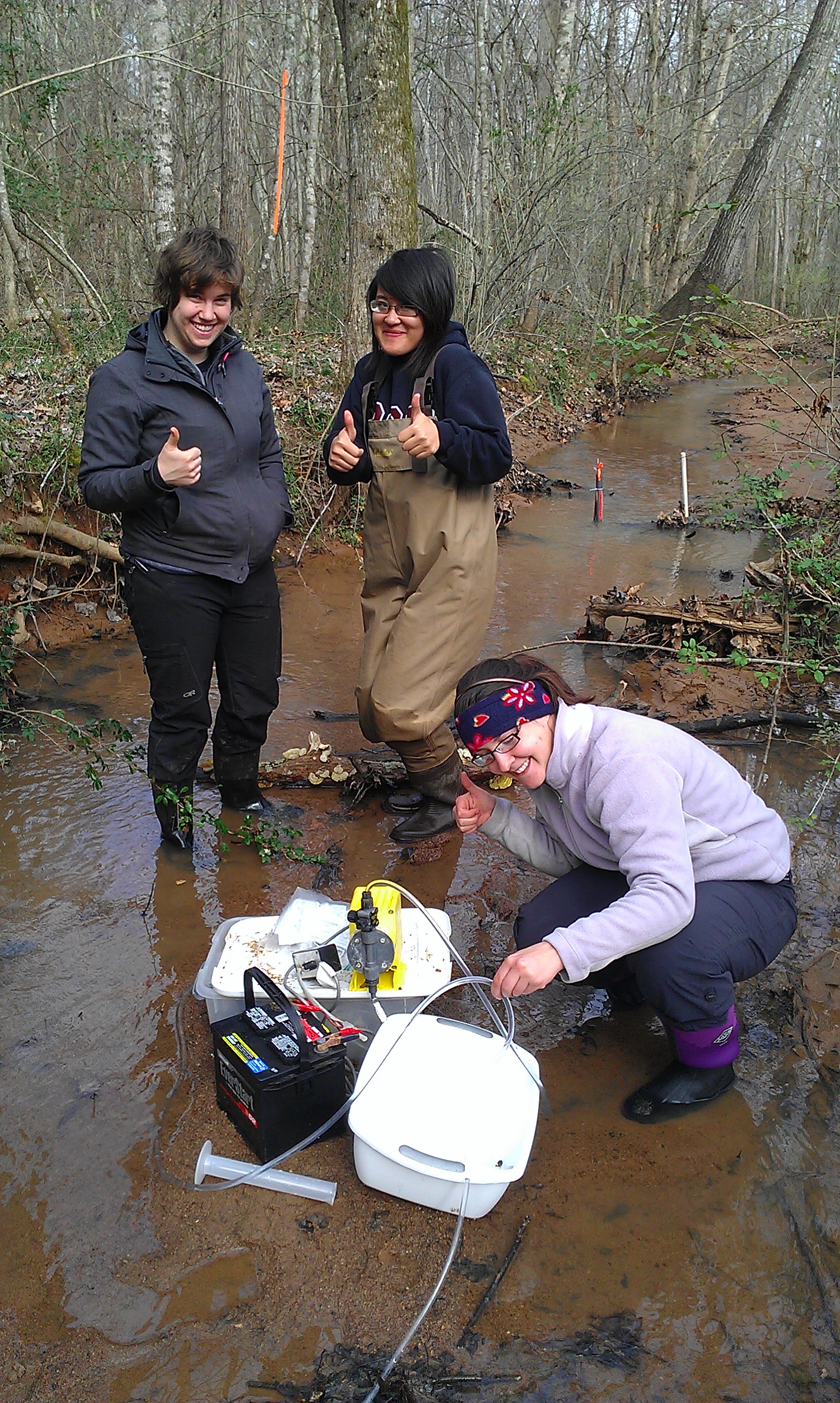The Secret Life of Rivers (the hyporheic zone)
The Secret Life of Rivers from S Solomon Leaping Frog Films on Vimeo.

The Secret Life of Rivers from S Solomon Leaping Frog Films on Vimeo.
Next week, the Watershed Hydrology Lab will be well represented at the CUAHSI 2014 Biennial Colloquium. We’ll be presenting four posters, so here come the abstracts… Development of hyporheic exchange and nutrient uptake following stream restoration Stuart Baker and Anne Jefferson Stream restoration is a multi-million dollar industry in Ohio, …
Cross-posted at Highly Allochthonous Leaving behind Ohio and the high waters from Sandy, I ventured south in early November for the Geological Society of America meeting in my former home of Charlotte, North Carolina. The meeting was busy and wonderful, and far too packed for me to hear as much …
A third abstract from our group for the 2012 Geological Society of America meeting: EVALUATING RESTORATION EFFECTS ON TRANSIENT STORAGE AND HYPORHEIC EXCHANGE IN URBAN AND FORESTED STREAMS OSYPIAN, Mackenzie L., Civil Engineering, University of North Carolina at Charlotte, Charlotte, NC 28262, mosypian@uncc.edu, JEFFERSON, Anne J., Department of Geology, Kent …


Some of our students are in the field this week, injecting Cl- and Br- into a restored reach and an unrestored reach in tributaries of Beaver Dam Creek. Our goal is to understand the role of wood jams versus restoration structures in promoting stream-hyporheic exchange.
In the photo are Alea, Xueying, and Mackenzie. Photo by Brittany. They’ve got it so capably handled they didn’t even need Sandra or I out there with them today, but I’m going tomorrow for an excuse to be in the field as much as anything.

Some of our students are in the field this week, injecting Cl- and Br- into a restored reach and an unrestored reach in tributaries of Beaver Dam Creek. Our goal is to understand the role of wood jams versus restoration structures in promoting stream-hyporheic exchange.
In the photo are Alea, Xueying, and Mackenzie. Photo by Brittany. They’ve got it so capably handled they didn’t even need Sandra or I out there with them today, but I’m going tomorrow for an excuse to be in the field as much as anything.

Some of our students are in the field this week, injecting Cl- and Br- into a restored reach and an unrestored reach in tributaries of Beaver Dam Creek. Our goal is to understand the role of wood jams versus restoration structures in promoting stream-hyporheic exchange.
In the photo are Alea, Xueying, and Mackenzie. Photo by Brittany. They’ve got it so capably handled they didn’t even need Sandra or I out there with them today, but I’m going tomorrow for an excuse to be in the field as much as anything.
Major congratulations to two Watershed Hydrogeology Lab graduate students who have finished writing their MS theses and will defend them next week. Ralph McGee and Cameron Moore both started in our MS in Earth Science program in August 2009, and less than two years later they have each completed impressive …
This post is cross-posted at Highly Allochthonous. Please look over there for any comments. Last week was the Geological Society of America meeting in Portland, Oregon. Just below is a view of Mt. Hood looking from the north, which I might have seen if I were not busy in and …
Haggerty, Roy; Martí, Eugènia; Argerich, Alba; von Schiller, Daniel; Grimm, Nancy B. 2009. Resazurin as a “smart” tracer for quantifying metabolically active transient storage in stream ecosystems J. Geophys. Res., Vol. 114, No. G3, G03014 (Roy will be talking about this work in our session at the GSA Annual Meeting …
The Watershed Hydrogeology Lab is going to be busy at this year’s Geological Society of America annual meeting in Portland, Oregon in October. We’ve submitted four abstracts for the meeting, I am co-convening a session, and I’ll be helping lead a pre-meeting field trip. The abstract below pulls together some …
Fiorillo, F. 2009. Spring hydrographs as indicators of droughts in a karst environment. Journal of Hydrology 373: 290-301. Rosenberry, D.O. and J. Pitlick. 2009. Effects of sediment transport and seepage direction on hydraulic properties at the sediment–water interface of hyporheic settings. Journal of Hydrology 373: 377-391. Gresswell, R. et al. …